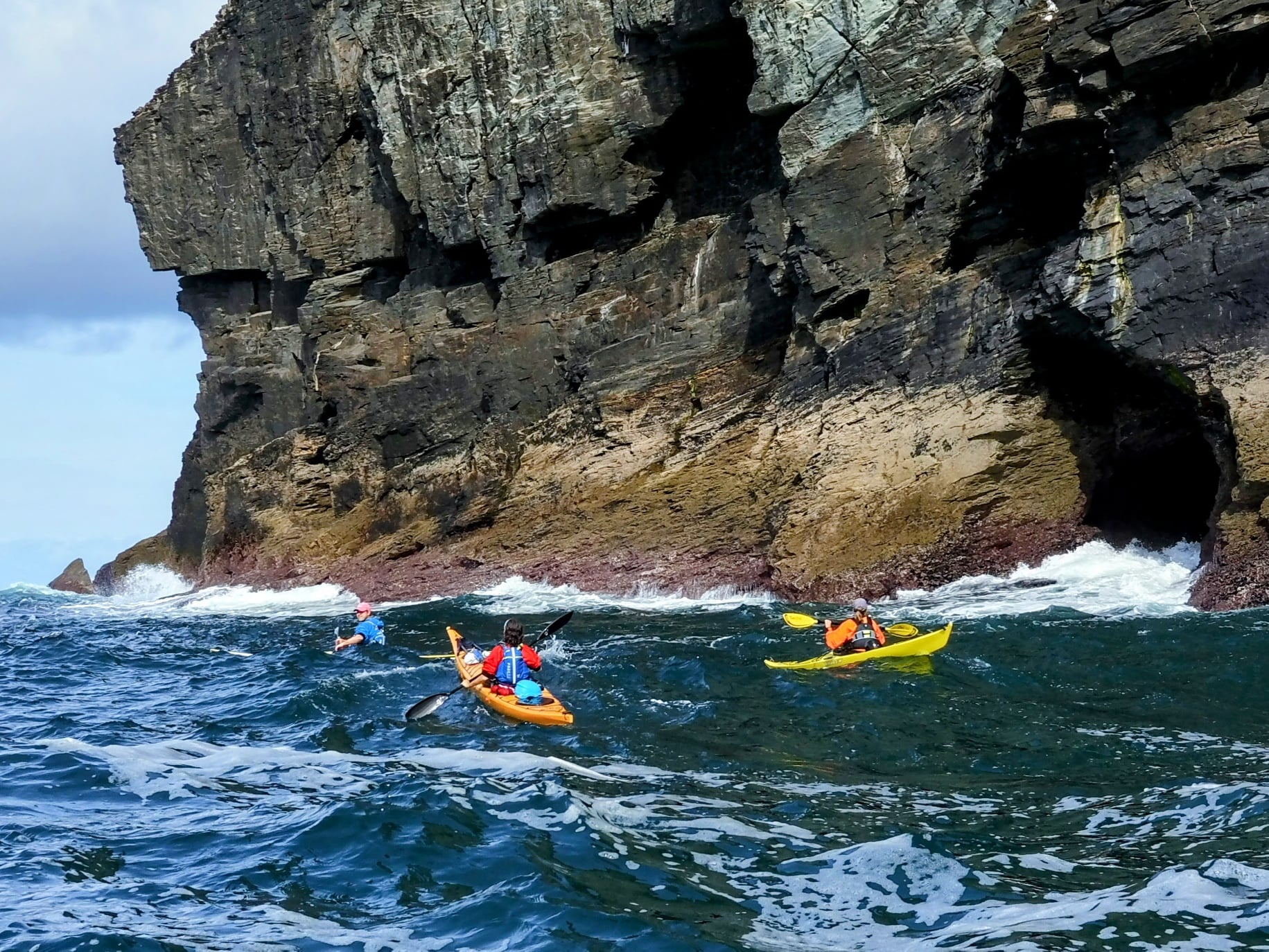3.2 Impact of wind
It is important to be able to understand the effect that the wind will have on us as sea kayakers. The table below describes conditions at each level of the Beaufort Scale, along with wind speeds in other units.
| Beaufort force | Speed in knots | Speed in mph | Sea conditions | Land conditions | Paddling |
|---|---|---|---|---|---|
| 1 | 1-3 | 1-3 | Small ripples | Smoke drifts, but wind vanes don’t move | Easy |
| 2 | 4-6 | 4-7 | Small wavelets that don’t break | Wind felt on face, leaves rustle and wind vanes move | Easy |
| 3 | 7-10 | 8-12 | Large wavelets, which occasionally break | Leaves and twigs in motion, light flags extend | Fairly easy, but noticeable work paddling into headwind. Novices struggle in crosswind. |
| 4 | 11-16 | 13-18 | Small waves, frequent white horses | Raises dust, small branches move | Effort into headwind. Following seas start to form. |
| 5 | 17-21 | 19-24 | Moderate longer waves. Many white horses, some spray | Small trees sway | Hard effort and paddle flutter. Cross winds awkward. |
As a rough guideline, wind of force 1-2 doesn’t affect kayakers too much. It makes sense to plan to paddle upwind at the start of the day when the wind is force 2-3, and certainly when it’s stronger than that. For inexperienced paddlers, boat handling can become tricky in force 3-4 winds, and less strong paddlers may find it hard to paddle upwind.
A few subtitles about interaction of wind with land and water:
When wind, or waves are going the opposite direction to a tidal stream, they become shorter, taller and often break - we call this ‘wind against tide’
If the wind is strong, it often makes sense to seek coastlines that are sheltered from the wind. However, the wind on these coastlines will blow offshore, creating a potential hazard. What seems like a light wind close to land and cliffs may be a strong wind further out. If the group gets blown away from land, getting back to shore may be difficult.
We can sometimes gain protection from the wind by tucking in close to the coast - e.g. into bays and behind headlands. This does, of course, depend on the way the wind is blowing, the shape of the coast and how tall the cliffs are (this tactic tends to be ineffective on the East Anglian coast!).
The wind blowing over the sea creates waves. The further and harder it blows, the bigger the waves. When the wind stops blowing, waves continue to travel across the ocean as a swell.
Waves reflect off cliffs, sometimes at an angle. The reflected waves interfere with the incident waves to create a steep, and often confused sea close to cliffs.
